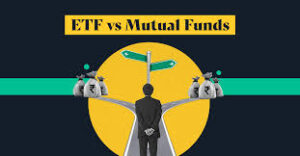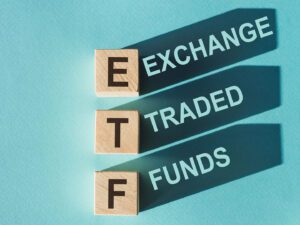
Understanding the Structure of ETFs vs. Mutual Funds: A Complete Guide
Contents
- 1 ETFs vs Mutual Funds
- 1.1 Understanding the Structure of ETFs vs. Mutual Funds: A Complete Guide
- 1.2 1. What are ETFs and Mutual Funds?
- 1.3 2. Key Structural Differences Between ETFs and Mutual Funds
- 1.4 3. Advantages of ETFs and Mutual Funds
- 1.5 4. Disadvantages of ETFs and Mutual Funds
- 1.6 5. Examples and Case Studies
- 1.7 6. Choosing Between ETFs and Mutual Funds
- 1.8 7. Conclusion
- 1.9 Frequently Asked Questions (FAQs)
- 1.10 ETFs vs Mutual Funds
- 1.11 The Power of Compound Interest in Building Retirement Savings
ETFs vs Mutual Funds
Understanding the Structure of ETFs vs. Mutual Funds: A Complete Guide
Investors have numerous options when it comes to building a diversified portfolio. Among the most popular choices are Exchange-Traded Funds (ETFs) and Mutual Funds. While both of these investment vehicles allow investors to gain exposure to a diversified set of assets, they differ significantly in their structure, management, cost, and trading mechanisms. This article provides an in-depth analysis of ETFs and mutual funds, comparing their features, advantages, and disadvantages, and examining which option might suit different types of investors.


1. What are ETFs and Mutual Funds?
Exchange-Traded Funds (ETFs)
An ETF, or Exchange-Traded Fund, is a type of investment fund that holds a collection of securities, such as stocks or bonds, and is traded on an exchange like a stock. ETFs often aim to track the performance of a specific index, such as the S&P 500, by holding the same stocks as those within that index. Because of their index-tracking nature, most ETFs are passively managed.
Mutual Funds
Mutual funds pool money from multiple investors to invest in a diversified portfolio of stocks, bonds, or other securities. These funds are generally actively managed by professional fund managers who seek to outperform a specific benchmark or achieve a particular investment goal. Mutual funds are not traded on exchanges; instead, they are bought and sold through the mutual fund company at the fund’s Net Asset Value (NAV), which is calculated at the end of each trading day.
2. Key Structural Differences Between ETFs and Mutual Funds
A. Management Style: Active vs. Passive
- ETFs: Primarily passive, tracking a specific index or sector. However, some actively managed ETFs exist, but they are less common and generally more expensive.
- Mutual Funds: Typically actively managed, with fund managers who make regular adjustments to try to outperform an index or achieve a specific objective.
B. Trading and Liquidity
- ETFs: Traded on an exchange, allowing investors to buy or sell shares throughout the day at the current market price. This intra-day trading provides greater flexibility and allows investors to capitalize on price movements within the trading day.
- Mutual Funds: Only priced once per day, based on the Net Asset Value (NAV) calculated after the market closes. Purchases and redemptions occur at the end-of-day NAV, which means investors cannot trade mutual funds at real-time prices.
C. Expense Ratios
- ETFs: Often have lower expense ratios due to passive management. Since they track an index, there’s less need for extensive research and trading, which reduces operational costs.
- Mutual Funds: Generally have higher expense ratios due to active management. The cost of researching, trading, and adjusting holdings to meet performance goals results in higher fees.
D. Tax Efficiency
- ETFs: More tax-efficient because of their unique structure that allows in-kind transfers. This process helps minimize capital gains distributions to shareholders.
- Mutual Funds: Can be less tax-efficient, especially if the fund experiences high turnover. The selling and buying of assets generate capital gains, which are distributed to shareholders, who are then taxed.
E. Minimum Investment Requirements
- ETFs: Usually require the purchase of at least one share, with no specific minimum investment amount. This makes them accessible to a broader range of investors.
- Mutual Funds: Often have a minimum initial investment requirement, which can range from $500 to $3,000 or more. This makes them less accessible to some small-scale investors.


3. Advantages of ETFs and Mutual Funds
Advantages of ETFs
- Liquidity: ETFs trade like stocks on exchanges, so they can be bought and sold throughout the trading day. This allows for greater flexibility and real-time pricing.
- Lower Expense Ratios: Due to passive management, ETFs typically have lower management fees, making them a cost-effective investment choice.
- Tax Efficiency: ETFs generally incur fewer capital gains distributions compared to mutual funds, making them more tax-efficient for investors.
- Transparency: ETF holdings are published daily, allowing investors to see what assets they own and providing a high level of transparency.
- Accessibility: With no minimum investment requirements, ETFs are accessible to investors with varying levels of capital.
Advantages of Mutual Funds
- Professional Management: Mutual funds are actively managed by financial experts who seek to outperform market indexes, which can be beneficial for investors looking for higher returns.
- Automatic Reinvestment: Many mutual funds allow investors to automatically reinvest dividends and capital gains, helping to compound returns over time.
- Diversification: Mutual funds provide instant diversification across a variety of assets, reducing the risk associated with investing in individual securities.
- Availability of Specialized Funds: Mutual funds offer access to a wide range of specialized funds, such as sector-specific or goal-oriented funds.
- Regular Purchases and Redemptions: Although mutual funds don’t offer intra-day trading, their end-of-day NAV pricing suits long-term investors who aren’t focused on short-term market fluctuations.
4. Disadvantages of ETFs and Mutual Funds
Disadvantages of ETFs
- Bid-Ask Spread: Since ETFs are traded on exchanges, they are subject to bid-ask spreads. This can increase the cost for investors, particularly for less liquid ETFs.
- Potential for Lower Returns in Bear Markets: Passively managed ETFs that track indexes may suffer losses during bear markets since they don’t have the flexibility to adjust holdings.
- Complex Trading for Beginners: The ability to trade ETFs throughout the day may tempt inexperienced investors to make frequent trades, leading to potential losses.
- Dividend Reinvestment Challenges: Not all brokerages offer automatic dividend reinvestment for ETFs, meaning investors may need to manually reinvest dividends.


Disadvantages of Mutual Funds
- Higher Expense Ratios: Actively managed mutual funds usually have higher fees, which can eat into returns over time.
- Less Tax-Efficient: Due to higher turnover and capital gains distributions, mutual funds can lead to a higher tax burden for investors.
- Limited Trading Flexibility: Mutual funds can only be traded at the end-of-day NAV, limiting the flexibility to react to market changes during the trading day.
- Potential Sales Loads: Some mutual funds carry sales loads, which are fees charged when buying or selling shares. These can add a layer of cost for investors.
- Minimum Investment Requirements: Mutual funds often require a higher initial investment, which may be a barrier for small investors.
5. Examples and Case Studies
Example 1: Long-Term Growth with a Low-Cost ETF
Consider an investor, Sarah, who is in her 30s and is looking for a low-cost, long-term growth option. She decides to invest in the Vanguard Total Stock Market ETF (VTI), an ETF that tracks the entire U.S. stock market. The ETF has a low expense ratio of 0.03% and provides instant diversification across a broad range of stocks. Sarah can buy shares in VTI without needing a minimum investment, and she benefits from its tax-efficient structure.
Example 2: Actively Managed Mutual Fund for Capital Appreciation
John, a retiree, prefers a more hands-on approach and is willing to pay higher fees for the potential of higher returns. He chooses the Fidelity Contrafund (FCNTX), a mutual fund managed by seasoned professionals. The fund has an expense ratio of 0.85%, but John feels that the expertise and flexibility of the fund managers will help his investment perform better than a market-tracking ETF.
Example 3: Short-Term vs. Long-Term Investors
Maria and Alex both have $5,000 to invest, but their time horizons differ. Maria wants to make quick trades and take advantage of short-term market movements, so she invests in SPDR S&P 500 ETF (SPY). On the other hand, Alex has a long-term investment perspective and chooses a mutual fund (Vanguard 500 Index Fund). Alex’s fund automatically reinvests dividends, compounding his investment over time, while Maria enjoys the flexibility of buying and selling her ETF whenever she sees fit.
6. Choosing Between ETFs and Mutual Funds
The choice between ETFs and mutual funds largely depends on the individual investor’s goals, risk tolerance, and trading preferences. Here’s a brief guide to help with the decision:


ETFs Might Be Right For You If:
- You seek low-cost, tax-efficient investment options.
- You prefer flexibility in trading and want to take advantage of intra-day price movements.
- You’re comfortable managing your portfolio and can resist the temptation of frequent trading.
Mutual Funds Might Be Better If:
- You prefer professional management and are willing to pay higher fees for potentially higher returns.
- You have a long-term investment horizon and are not concerned with intra-day price changes.
- You want an investment that automatically reinvests dividends and capital gains.
7. Conclusion
ETFs and mutual funds offer unique advantages and disadvantages, making them suitable for different types of investors. ETFs are typically more cost-effective, tax-efficient, and flexible due to their passive nature and intra-day trading availability. Mutual funds, on the other hand, provide access to professional management, a wide range of specialized funds, and automatic reinvestment of dividends, making them a strong choice for long-term investors. When choosing between ETFs and mutual funds, it’s essential to consider your financial goals, investment time horizon, and risk tolerance to select the best option for your portfolio.


Frequently Asked Questions (FAQs)
1. Which is better for beginners, ETFs or mutual funds?
ETFs may be more accessible to beginners due to their lower fees, flexibility in trading, and ease of access without high minimum investments. However, mutual funds offer professional management, which some beginners may find helpful.
2. Are ETFs safer than mutual funds?
Neither ETFs nor mutual funds are inherently safer. The level of risk depends on the underlying assets they hold. However, ETFs typically have lower fees, which can make them more cost-effective.
3. Can I lose money with ETFs or mutual funds?
Yes, both ETFs and mutual funds are subject to market risk, and investors can lose money. It’s important to research each fund’s holdings and historical performance.
4. Do ETFs pay dividends like mutual funds?
Yes, many ETFs pay dividends based on the income generated by the underlying assets. Dividends can be reinvested or paid out to investors, depending on the brokerage.
5. Are mutual funds good for long-term investment?
Yes, mutual funds are generally well-suited for long-term investments due to their professional management and automatic reinvestment options.
ETFs vs Mutual Funds
The Power of Compound Interest in Building Retirement Savings




















1 comment